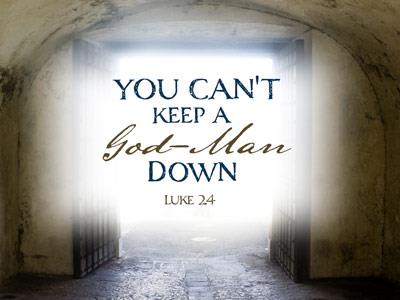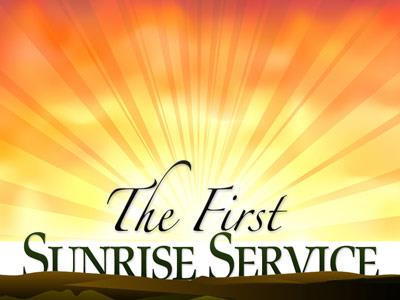-
While It Was Still Dark
Contributed by Anne Robertson on Nov 28, 2017 (message contributor)
Summary: The greatest miracles are often done in the darkest times, when no one knows and no one is watching.
WHILE IT WAS STILL DARK
TEXT: John 20:1-18
For those of us who practice Christian faith, the resurrection is the central, monumental event of history. Whether you’re the type of Christian that looks at it as historical reality or the type of Christian that sees it as a story of only spiritual truth, for all of us, the message of resurrection is the absolute center.
Of course it was the central message for the disciples as well, and the story is recorded in all four of the Gospels. But to say that all four report it is not to say that all four tell it the same way. The Gospel of John has a number of differences, and one of those in particular I think is helpful to think about.
Matthew, Mark, and Luke all report that some variety of persons went to the tomb early on the first day of the week. Matthew and Luke say it was at dawn, Mark says it was early but notes “when the sun had risen.” John alone notes that Mary Magdalene went to the tomb, “while it was still dark.” Now, if you’re really worried about that sort of thing you can say that Mary went before dawn and others came later, but I think you’d be missing the point.
Of all the Gospel writers, John is the philosopher. John’s Gospel is highly symbolic and multi-layered. It almost never means only what the words on the page say. There are symbolic themes that run throughout. John’s Gospel was written much later than the other three, and there are those who say that it was meant as a commentary on the other three…the Matthew, Mark, and Luke will tell you what happened and John will tell you what it all means.
One of the key themes that runs through the Gospel of John is the theme of light and dark. It is introduced in the very first paragraph of the Gospel. John 1:3-5 reads, “What has come into being in him was life, and the life was the light of all people. The light shines in the darkness, and the darkness did not overcome it.”
After setting that up in the first paragraph, I don’t think it’s any accident that we have the light/dark theme appearing here at the end. I don’t think that John forgot whether the sun was up yet, and I don’t think it’s a mere historical rendering of when May showed up at the tomb. When Mark says it’s dark, he means you can’t see. When John says it’s dark, he means much more than physical darkness.
The last time we saw Mary Magdalene in John’s Gospel, she was standing at the foot of the cross as Jesus died. Now if you want to talk about whether Jesus and Mary were married, you’ll have to come to the class on the DaVinci Code I’m doing in May, but it’s clear that they were very close. She’s there at the cross with Jesus’ mother, Jesus’ aunt, and John. She’s the first one to the tomb and the first to see Jesus after his resurrection. She’s not on the fringe of Jesus’ followers, which means that for Mary, as much as for any of Jesus’ other disciples, the days have been dark indeed.
She was there at the darkest of them. She watched him die…horribly, brutally, as a criminal. That’s about as dark as it gets in a soul. And when she comes to the tomb on that first day of the week, it is still dark. She is still deep in the grief and horror and disbelief of what has happened. The sun could have been shining brightly…doesn’t matter. For her it is dark, dark, dark.
But John wants to say more than indicating that Mary hasn’t had a very good weekend. His theme from the beginning is that Jesus is the light of the world, and no amount of darkness can snuff that out. What he is showing, I think, is how Mary lives out that hope and what happens as a result.
What’s interesting to me is that not one of the Gospels tells us of the actual resurrection. Nobody records blinding flashes of light, earthquakes, visions, glowing rocks…nothing. What they report is the discovery of an empty tomb…nobody tells about the event itself. Here is this huge, central event and nobody but nobody sees it. Even though Jesus’ birth was ignored by the masses, there were still angels singing to shepherds, signs in the night sky that foreign astrologers could read, and a king mad enough about a possible usurper to the throne that he orders a massacre of children. But nobody at all gets tipped off about the resurrection in any of the stories. It happened sometime in the night…while it was still dark…and nobody knew until Mary went and looked.

 Sermon Central
Sermon Central



